Microgreens: Nutrition, Benefits, Risks, And More
Get your fix of these healthy greens in your salads as small packets of nutrition.
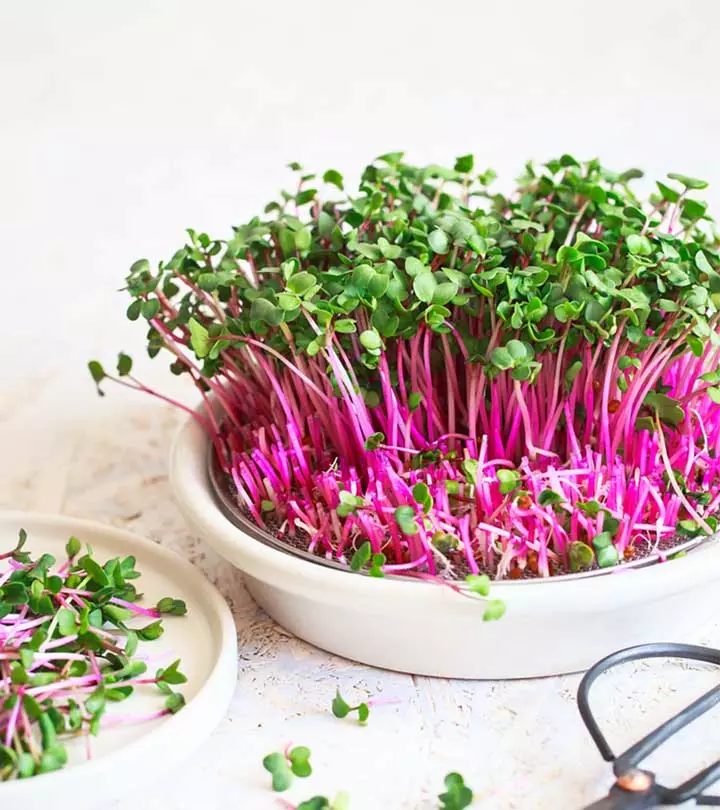
Image: Shutterstock
Microgreens are nutrient-rich vegetable greens that can even grow on a windowsill with access to sunlight. These micro herbs are often considered functional superfoods by scientists around the globe for their therapeutic properties. They also enhance the color, texture, and flavor of the food and are said to be more nutritious than sprouts. Besides, their rich antioxidant, carotenoid, and phytochemical components help prevent and treat several ailments, including cardiovascular disease, cancer, and diabetes.This article explores the health benefits of microgreens, their types, nutritional profile, potential risks, and how to grow them at home.
Keep reading!
 Know Your Ingredient: Microgreen
Know Your Ingredient: MicrogreenWhat Is It?
A nutrient-rich green vegetable that is considered a functional food due to its therapeutic properties.
What Are Its Benefits?
It improves heart health, helps in diabetes management, and enhances digestion
Who Can Consume It?
Microgreen is generally considered safe to eat, except for pregnant women, the elderly, and people with weak immunity
How Often?
Around 15-20 pounds daily for a week should be consumed for optimal heath.
Caution
Pregnant women, the elderly, and people with weak immunity should refrain from the consumption of microgreen, as they might develop serious food-borne illnesses from its intake.
In This Article
What Are Microgreens?
Microgreens are edible young greens harvested just after the cotyledons (seed leaves) have developed. They range from 1 to 3 inches (2.5 to 7.5 cm) in size, including the stem and leaves. They have an aromatic flavor, but their taste may vary — neutral, spicy, slightly sour, or even bitter — based on the variety. Moreover, microgreens are rich in nutrients and are available in different colors and textures.
Microgreens are also a sustainable food choice, as they require significantly fewer resources than traditional farming methods. They thrive in smaller spaces, making them ideal for urban environments with limited space. They also require less water than other crops and no pesticides due to their shorter growing period.
Microgreens can be grown from different types of seeds. Here is a list of the commonly available varieties of microgreens.
Key Takeaways
- Microgreens may improve heart health, help fight cancer, and treat Alzheimer'si A progressive disease that impairs memory and cognitive functions due to the shrinkage of brain cells. disease.
- You can add them to sushi, burger, grilled cheese sandwich, spring salad, and strawberry chocolate tart.
- Always store them at 4°C or lower to control microbial growth.
Types Of Microgreens
The most popular microgreen varieties are produced from the seeds of the following plant families:
- Cucurbitacacea Family: Squash, cucumber, and melon.
- Lamiaceae Family: Basil, rosemary, sage, and oregano.
- Apiaceae Family: Celery, dill, fennel, and carrot.
- Poaceae Family: Cereals and grasses like rice, oats, corn, barley, and wheatgrass. Legumes like lentils, chickpeas, and beans.
- Brassicaceae Family: Cabbage, broccoli, watercress, arugula, radish, and cauliflower.
- Amaranthaceae Family: Quinoa, Swiss chard, amaranths, spinach, and beet.
- Amaryllidaceae Family: Leek, garlic, and onion.
- Asteraceae Family: Radicchio, lettuce, endive, and chicory.
 Trivia
TriviaDid you know that microgreens offer a greater amount of nutrients than mature vegetables? What nutrients do they actually contain? Keep scrolling to know.
Microgreens Nutrient Content
Microgreens are a rich source of vitamins, minerals, antioxidants, and other plant compounds (1). A study by the University of Maryland (USA) found that microgreen leaves have higher nutritional values than mature leaves (2). They also contain significant levels of both microelements (iron and zinc) and macroelements (potassium and calcium) (3).
According to studies, growing broccoli microgreens requires 158-236 times less water than what it takes to grow a nutritionally equivalent mature vegetable (4).
The phytonutrient quantity of vegetables decreases as they mature. Therefore, they offer more health-promoting properties at the seedling stage (microgreens or sprouts) (5). In addition, microgreens also contain polyphenols with high antioxidant properties (6).
According to the U.S. Department of Agriculture, 100 grams of sunflower and basil microgreens contain (7):
Calories | 28 |
Protein | 2.21 g |
Fat | 0 g |
Carbohydrate | 4.42 g |
Fiber | 2.2 g |
Sugar | 0 g |
Calcium | 88 mg |
Iron | 15.91 mg |
Magnesium | 66 mg |
Phosphorus | 66 mg |
Potassium | 298 mg |
Sodium | 11 mg |
Manganese | 1 mg |
Vitamin C | 6.6 mg |
Niacin | 1.326 mg |
Folate | 66µg |
Consuming these nutrient-dense microgreens is sure to offer many health benefits. Keep scrolling to find out if they are safe to consume or not.
Are Microgreens Safe?
Microgreens are generally safe to consume. These tiny, nutrient-packed plants are grown in controlled environments, minimizing exposure to contaminants such as pesticides and pathogens. However, safety depends on proper handling and cultivation practices. To ensure it, microgreens have to be grown using clean soil and uncontaminated water sources. Proper hygiene during harvesting, storage, and handling is also essential to prevent contamination.
While microgreens are safe for most people, individuals with compromised immune systems should exercise caution. Overall, microgreens can typically be a safe and nutritious addition to your diet when grown and handled responsibly.
We now know it’s safe to add microgreen in our diet. Let’s find out more about its health benefits!
Health Benefits Of Microgreens

1. May Improve Heart Health
The antioxidant and carotenoid compounds in microgreens may help reduce the risk of cardiovascular disease (CVD) (8). An animal study found that supplementing red cabbage microgreens had significantly lowered the LDL cholesterol levels and reduced CVD risk (9). The rich polyphenolici Naturally occurring compounds found in plant-based foods that protect tissues from oxidative stress due to their antioxidant properties. content in microgreens may help lower the inflammatory response. It may also improve endothelial function and prevent the clumping of platelets, contributing to a reduced CVD risk (10).
2. May Help Fight Cancer
A review published in Antioxidants suggests that four Brassicaceae (broccoli, kale, mustard, and radish) microgreens have an antiproliferative propertyi Any substance that tends to suppress the growth of cells, especially malignant cells and helps prevent the spread of cancer cells. effect. Hence, consuming them daily may help reduce the risk of colon cancer (11). Microgreen aqueous extracts of green pea, soybean, radish, Red Rambo radish, and rocket microgreens were found to have cancer-protective effects (12). Even mustard green’s benefits include a potential reduction in cancer risk due to its rich polyphenol content. Most laboratory studies also suggest that polyphenols have anti-cancer effects. However, these effects vary for different compounds (13).
Note: Some polyphenols like genistein and daidzein may have adverse effects on hormone-related cancer. Therefore, the use of polyphenols for treating cancer should be dealt with caution.
3. May Have Anti-Diabetic Properties

Studies found that bioactive compounds in broccoli microgreens may help reduce the risk of several chronic diseases, including type-2 diabetes (14). Another study by the Wrocław University of Environmental and Life Sciences (Poland) found that microgreens have high carotenoid and chlorophyll content and exhibit higher anti-diabetic activity than sprouts (15).
Aqueous fenugreek microgreen extract was found to inhibit α-amylase (an enzymei Proteins that act as a biological catalyst and help accelerate chemical reactions essential for the body's metabolism. that break down carbohydrates that breaks down carbohydrates). This helps slow down carbohydrate metabolism and keeps blood sugar levels in control (16). Apart from fenugreek, arugula is also said to be beneficial for people with diabetes. Arugula benefits include being an excellent source of antioxidants. It is low in carbs and sugar content, which makes it perfect for people trying to reduce their blood sugar levels.
4. May Help Treat Alzheimer’s Disease
Microgreens are rich in plant polyphenols that help act against neurodegenerative disorders like Alzheimer’si A progressive disease that impairs memory and cognitive functions due to the shrinkage of brain cells. disease (AD). Their dietary intake may improve cognitive function and delay or prevent the onset of AD (17), (18). Additionally, microgreens have the potential to block the activity of cholinesterase (the enzymesi Proteins that act as biological catalysts and help accelerate chemical reactions essential for the body's metabolism. present in the central nervous system), which helps in the treatment of Alzheimer’si A progressive disease that impairs memory and cognitive functions due to the shrinkage of brain cells. disease (8).
5. May Reduce Kidney Disease Risk
Eating potassium-rich foods may cause kidney diseases.
However, a study by the University of Bari Aldo Moro (Italy) found that microgreens can be produced with a low potassium content using the hydroponic (grown without soil) system (19). These hydroponic microgreens can be an ideal dietary option for individuals with impaired kidney function (20).
6. May Promote Digestive Health

A review published in Gut Microbes suggests that taking dietary fiber and prebiotics helps promote microbiota in the colon and improves digestive health (21). Dietary fiber intake can also increase stool frequency in people with constipation (22).
Microgreens are also rich in carotenoids that are essential for human vision. Beta-carotene is a precursor of vitamin A that helps protect the eyes by absorbing excess light intensity (23).
This way, microgreens greatly contribute to your overall health. However, these seedlings may cause adverse effects in some individuals. Read on to know what they are.
Risks Associated With Microgreens Intake
Consuming microgreens is generally considered safe. However, they carry a risk of contamination that may cause food poisoning. A study by the USDA Agricultural Research Service observed the growth of E. coli in microgreens produced from radish seeds (24). Hence, buy seeds from a reputed manufacturer to avoid contamination if you want to grow microgreens at home. Disinfectants like chlorinated water can be used to prevent microbial contamination. Moreover, the medium of growing microgreens also plays an important role in getting a higher quality yield (25).
Note: Nightshade plants like peppers, eggplants, potatoes, and tomatoes should not be grown and taken as microgreens. They contain toxic compounds that cause adverse effects (26).
Microgreens enhance the flavor of the food besides adding texture and vibrancy. Moreover, including microgreens in your diet is simple. Here are a few ways to do it.
How To Include Microgreens In Your Diet
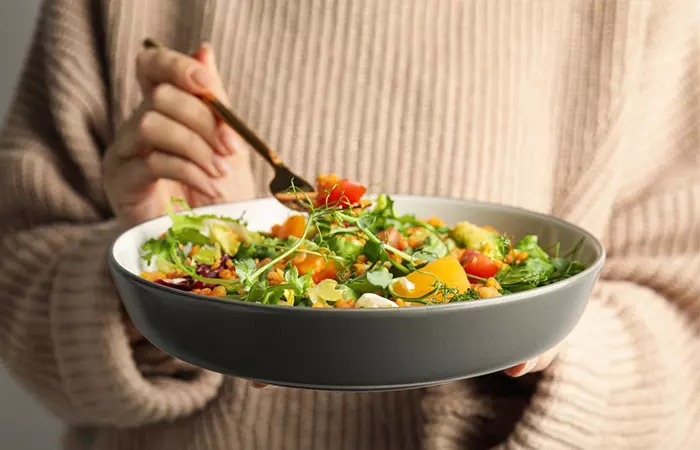
- Add microgreens after you take your pizza out of the oven to keep them crunchy. You can also let them cook and wilt a bit.
- Include sunflower microgreens in the making of Pesto (a versatile sauce).
- Incorporate in your spring salad.
- Add to your favorite sushi.
- Add to a strawberry chocolate tart.
- Use to make an omelet or frittata to add flavor and color.
- Add to a grilled cheese sandwich.
- Make smoothies or juices with microgreens like wheatgrass.
- Add to your burger.
You can eat microgreens raw, juiced, or blended.
You need high-quality seeds, proper lighting, and a growing medium to grow microgreens. Here is a step-by-step guide to grow microgreens at home.
How To Grow Microgreens At Home
1. Fill the tray/container with soil up to 3 to 4 inches high. You may also use growing mediums like coco coir, hemp mats, and peat moss. Just ensure that the medium you choose allows proper drainage and holds moisture efficiently.
2. Sprinkle the seeds. The spacing between the seeds need not be even.
3. Cover the seeds with a very thin layer of soil and gently pat the surface to make the seeds settle well in the container.
4. Spray enough water to make the surface completely moist.
5. The container can be kept at room temperature for about two days until germination occurs.
6. Place the container in a sunny spot for at least 3 to 4 hours a day.
7. Sprinkle a little water over the growing greens once a day. You will see small leaves growing over the soil in 3 to 4 days.
8. Harvest when they grow 2 to 3 inches taller (after 7 to 10 days).
Bhuvana, a blogger, shared her personal experience about growing microgreens at her home during the COVID-19 period. In her blog post, she recounts, “Its nutrient value is one important factor which attracted me, but initially I was attracted more by the unique way of growing it without using soil and also the sheer beauty of greenness and freshness it gave to the eyes each morning as you see it (i).”
You need proper storage conditions to enhance the shelf life of microgreens. Let us discuss them in the following section.
How To Store Microgreens
Microgreens have a long shelf life if you store and pack them properly. Moisture control and temperature are the two most key factors to enhance their shelf life. Here are a few steps to follow:
- Place harvested microgreens between two paper towels and gently dab to remove moisture.
- Store at 4°C or less temperature to minimize microbial growth
They last approximately 5 to 10 days with proper handling and storage.
 Quick Tip
Quick TipAre microgreens and sprouts the same? If not, how do they compare? Keep reading to know.
Microgreens Vs. Sprouts
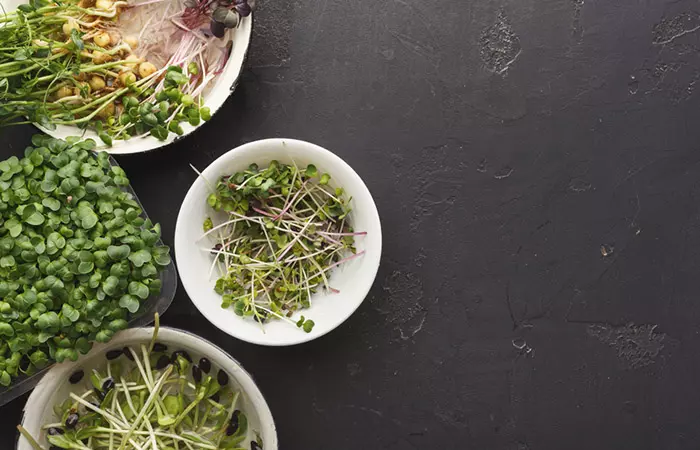
Arika Hoscheit, registered dietitian and nutritionist, says, “Microgreens are a bit different from sprouts. Microgreens grow in the soil whereas sprouts grow in water. Sprouts contain more amino acids, pectins, and sugars than microgreens.” She also adds, “Microgreens contain higher levels of carotenoids and chlorophylls without sugar and have also been shown to have better anti-diabetic effects than sprouts.”
Here are some other differences between microgreens and sprouts:
- Microgreens
- Sprouts
- Leaves and stems can be eaten.
- The ‘stem’ and seed can be eaten.
- Take around 1 to 3 weeks to grow, depending on the variety.
- Take 3 to 5 days to grow.
- Need light to grow.
- Do not need light to grow.
- Form leaves.
- Do not form leaves.
- Have higher nutrient and fiber values than sprouts.
- Have nutrients and fiber, but not as high as microgreens.
- Packed with flavor and are often used as garnishes.
- Great for crunch.
Conclusion
Microgreens are aromatic vegetable greens that are gaining popularity as a culinary trends for being a sustainable and nutritious source of fresh produce. The benefits of urban farming of microgreens extend beyond their delicious taste to include improved nutrition and environmental sustainability as they can be eaten raw or included in your diet in other forms. These easy-to-grow edible greens are richer in plant nutrients than mature vegetables and sprouts. Hence, consuming them may help improve heart health, enhance your vision, reduce the risk of cancer, and manage type-2 diabetes. However, you must take some measures if you are growing them at home, to avoid microbial contamination.
Frequently Asked Questions
Which microgreen is the most nutritious?
All microgreens are beneficial in promoting overall health. However, broccoli microgreens are considered the most nutritious because of their exceptional nutritional profile.
How many microgreens should I eat in a day?
Consuming 25 grams of microgreens per day is generally considered safe.
Can you survive on microgreens?
Not for long because microgreens lack other major nutrients.
Can microgreens make you sick?
Yes, microgreens may make you feel sick if they are contaminated with harmful bacteria.
Which microgreens are good for skin?
Sunflower and pea shoot microgreens are good for the skin because of their high vitamin content.
Illustration: Top Health Benefits Of Microgreens + Nutrition Facts
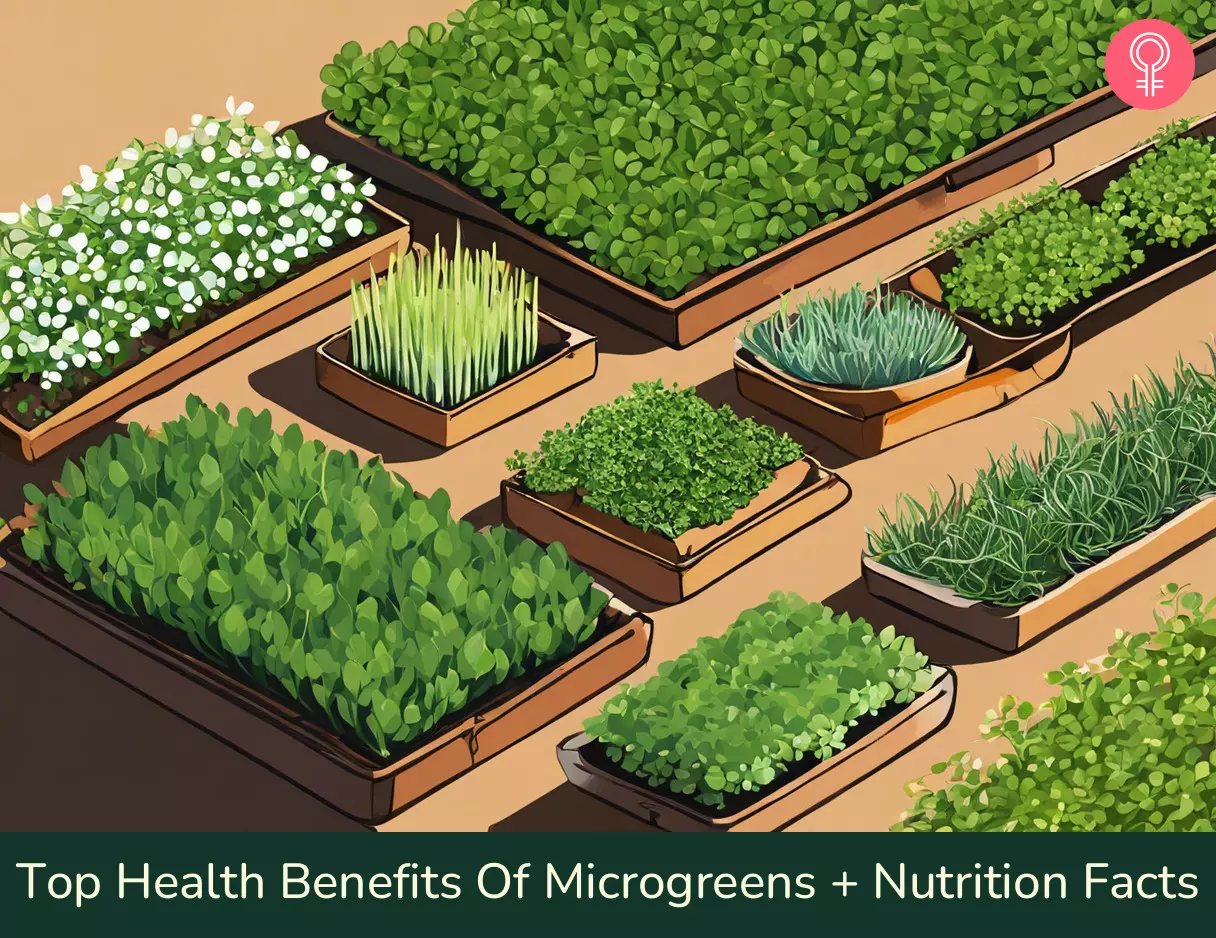
Image: Stable Diffusion/StyleCraze Design Team
Learn about the wonderful benefits of microgreens. Discover what they are and how to use them in your cooking. Watch this video and get ready to be inspired!
Personal Experience: Source
StyleCraze's articles are interwoven with authentic personal narratives that provide depth and resonance to our content. Below are the sources of the personal accounts referenced in this article.
i. Growing Microgreens – my learning during COVID – 19 DAYShttps://bhuvanablogs.wordpress.com/2020/05/16/growing-microgreens-my-learning-during-covid-19-days/
References
Articles on StyleCraze are backed by verified information from peer-reviewed and academic research papers, reputed organizations, research institutions, and medical associations to ensure accuracy and relevance. Read our editorial policy to learn more.
- Comparison between the mineral profile and nitrate content of microgreens and mature lettuces
https://www.sciencedirect.com/science/article/abs/pii/S0889157514001513 - Assessment of vitamin and carotenoid concentrations of emerging food products: edible microgreens
https://pubmed.ncbi.nlm.nih.gov/22812633/ - Microgreens of Brassicaceae: Mineral composition and content of 30 varieties
https://www.sciencedirect.com/science/article/abs/pii/S0889157516300448 - Broccoli Microgreens: A Mineral-Rich Crop That Can Diversify Food Systems
https://www.ncbi.nlm.nih.gov/labs/pmc/articles/PMC5362588/ - Amaranth sprouts and microgreens – a homestead vegetable production option to enhance food and nutrition security in the rural-urban continuum
https://www.researchgate.net/publication/272356648_Amaranth_sprouts_and_microgreens_-_a_homestead_vegetable_production_option_to_enhance_food_and_nutrition_security_in_the_rural-urban_continuum - Profiling Polyphenols in Five Brassica species Microgreens by UHPLC-PDA-ESI/HRMS
https://www.ncbi.nlm.nih.gov/labs/pmc/articles/PMC3915300/ - NEW DAY FARMS MICROGREENS SUNFLOWER & BASIL
https://fdc.nal.usda.gov/fdc-app.html#/food-details/437126/nutrients - Sprouts vs. Microgreens as Novel Functional Foods: Variation of Nutritional and Phytochemical Profiles and Their In vitro Bioactive Properties
https://www.ncbi.nlm.nih.gov/labs/pmc/articles/PMC7587365/ - Red Cabbage Microgreens Lower Circulating Low-Density Lipoprotein (LDL) Liver Cholesterol and Inflammatory Cytokines in Mice Fed a High-Fat Diet
https://pubmed.ncbi.nlm.nih.gov/27933986/ - The role of polyphenols in cardiovascular disease
https://pubmed.ncbi.nlm.nih.gov/20424562/ - Antiproliferative Effect of Bioaccessible Fractions of Four Brassicaceae Microgreens on Human Colon Cancer Cells Linked to Their Phytochemical Composition
https://www.ncbi.nlm.nih.gov/labs/pmc/articles/PMC7278869/ - Microgreens: Functional Food with Antiproliferative Cancer Properties Influenced by Light
https://pubmed.ncbi.nlm.nih.gov/34441474/ - Natural Polyphenols for Prevention and Treatment of Cancer
https://www.ncbi.nlm.nih.gov/labs/pmc/articles/PMC4997428/ - Bioactive Compounds and Bioactivities of Brassica oleracea L. var. Italica Sprouts and Microgreens: An Updated Overview from a Nutraceutical Perspective
https://www.ncbi.nlm.nih.gov/labs/pmc/articles/PMC7465980/ - Sprouts vs. Microgreens as Novel Functional Foods: Variation of Nutritional and Phytochemical Profiles and Their In Vitro Bioactive Properties
https://pubmed.ncbi.nlm.nih.gov/33053861/ - In vitro regulation of enzymatic release of glucose and its uptake by Fenugreek microgreen and Mint leaf extract
https://ifst.onlinelibrary.wiley.com/doi/abs/10.1111/ijfs.13588 - Dietary polyphenols for treatment of Alzheimer\’s disease–future research and development
https://pubmed.ncbi.nlm.nih.gov/25312617/ - Role of Plant Polyphenols in Alzheimer\’s Disease
https://pubmed.ncbi.nlm.nih.gov/27651253/ - Microgreens Production with Low Potassium Content for Patients with Impaired Kidney Function
https://pubmed.ncbi.nlm.nih.gov/29861444/ - Evaluation of the Bioaccessibility of Antioxidant Bioactive Compounds and Minerals of Four Genotypes of Brassicaceae Microgreens
https://www.ncbi.nlm.nih.gov/labs/pmc/articles/PMC6679176/ - Dietary fiber and prebiotics and the gastrointestinal microbiota
https://www.ncbi.nlm.nih.gov/labs/pmc/articles/PMC5390821/#cit0010 - Effect of dietary fiber on constipation: a meta analysis
https://pubmed.ncbi.nlm.nih.gov/23326148/ - Microgreens as a Component of Space Life Support Systems: A Cornucopia of Functional Food
https://www.ncbi.nlm.nih.gov/labs/pmc/articles/PMC5600955/ - Comparison of the growth of Escherichia coli O157: H7 and O104: H4 during sprouting and microgreen production from contaminated radish seeds
https://pubmed.ncbi.nlm.nih.gov/25084646/ - Physicochemical agronomical and microbiological evaluation of alternative growing media for the production of rapini (Brassica rapa L.) microgreens
https://pubmed.ncbi.nlm.nih.gov/27311947/ - Innovative Farming of Edible Micro Greens at Home and their Nutritional Composition
https://www.researchgate.net/publication/343474211_Innovative_Farming_of_Edible_Micro_Greens_at_Home_and_their_Nutritional_Composition
Read full bio of Tracy Tredoux
Read full bio of Sindhu Koganti
Read full bio of Ravi Teja Tadimalla
Read full bio of Aparna Mallampalli






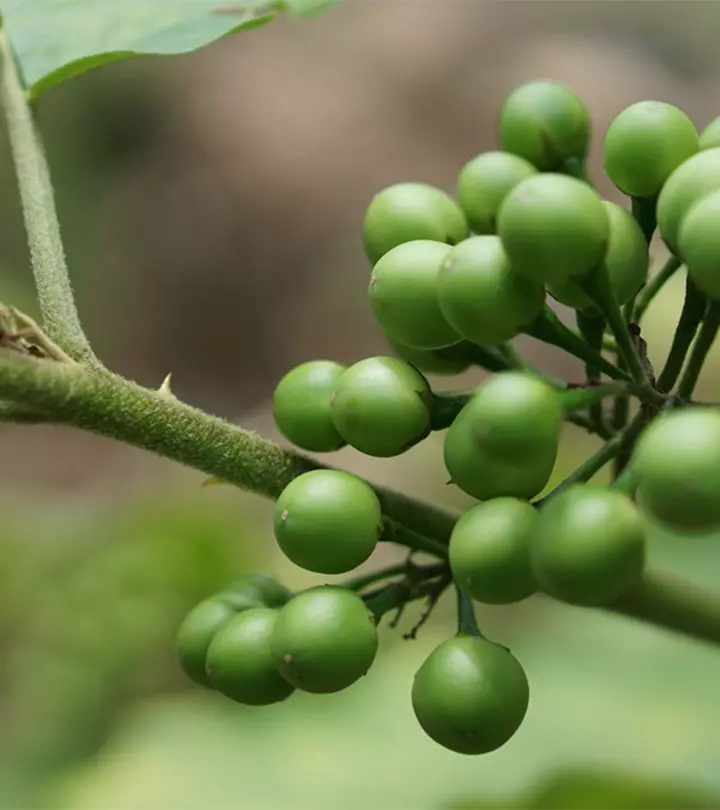
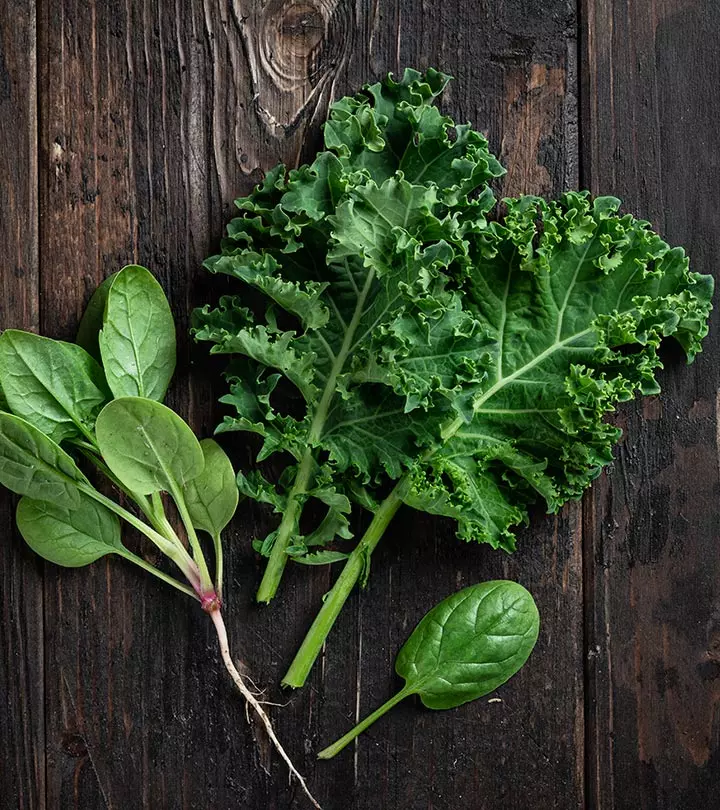
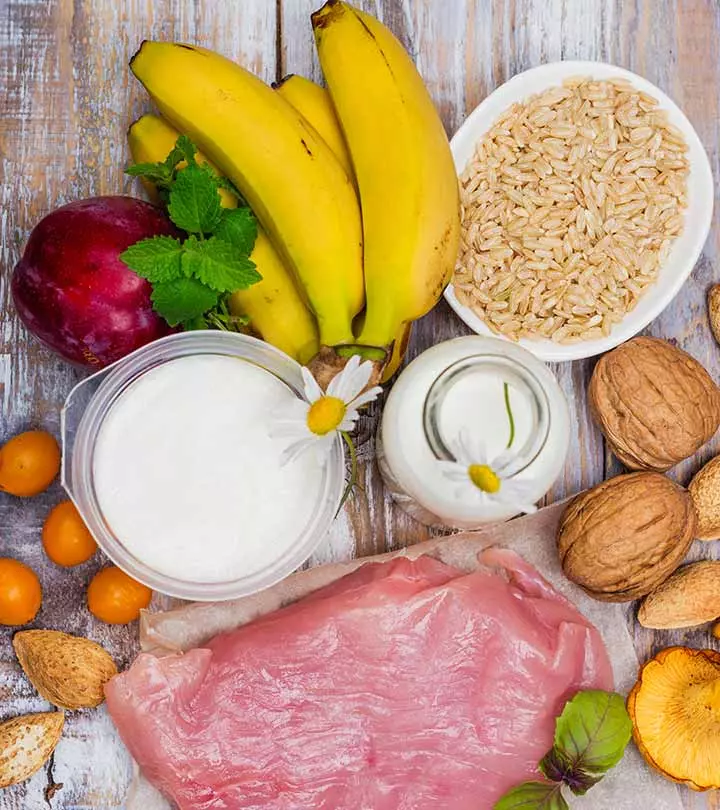
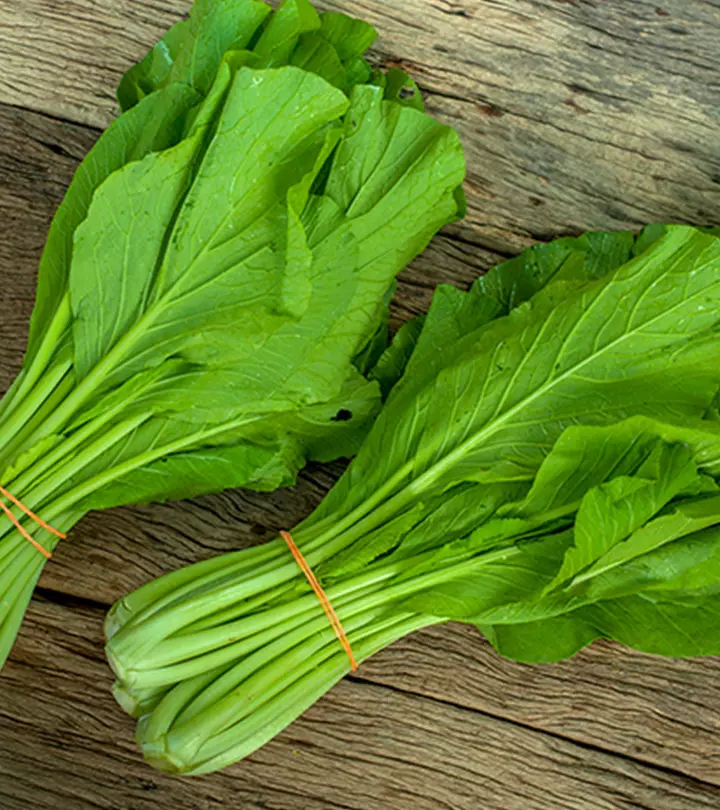
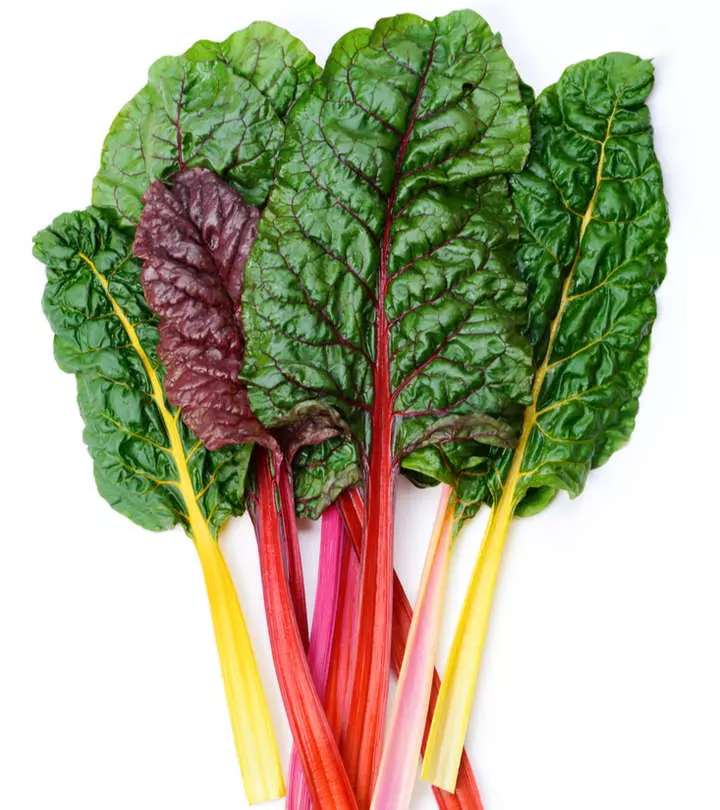
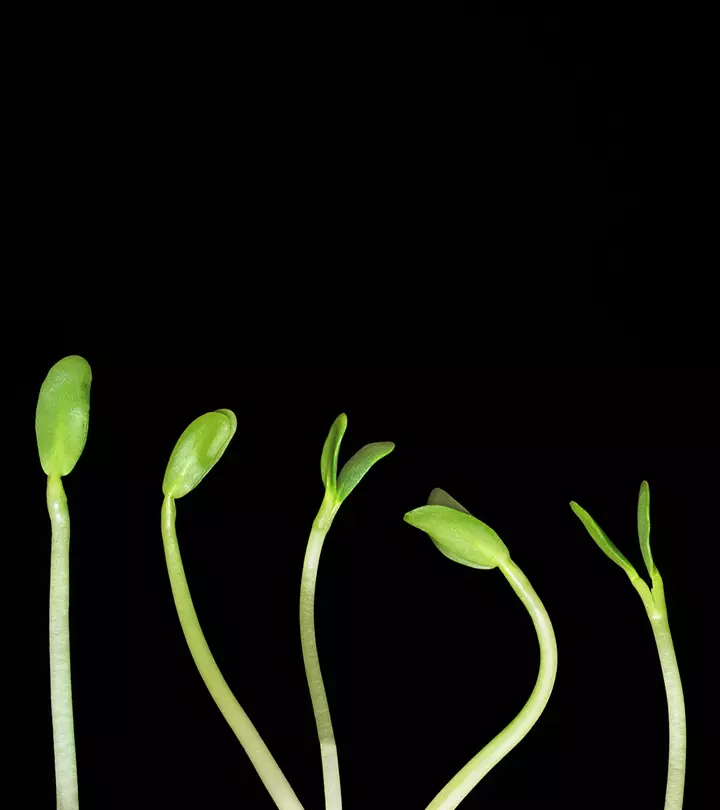
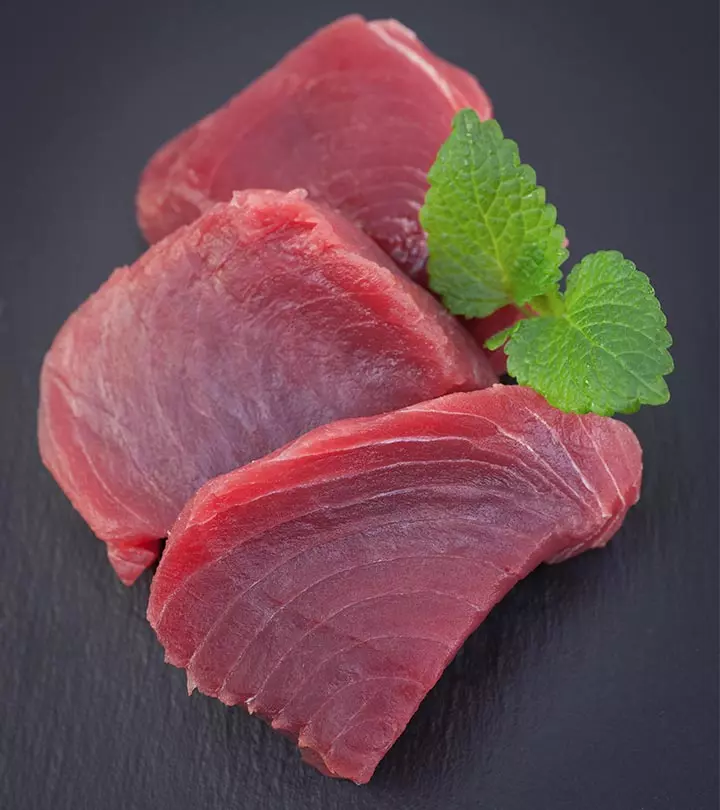
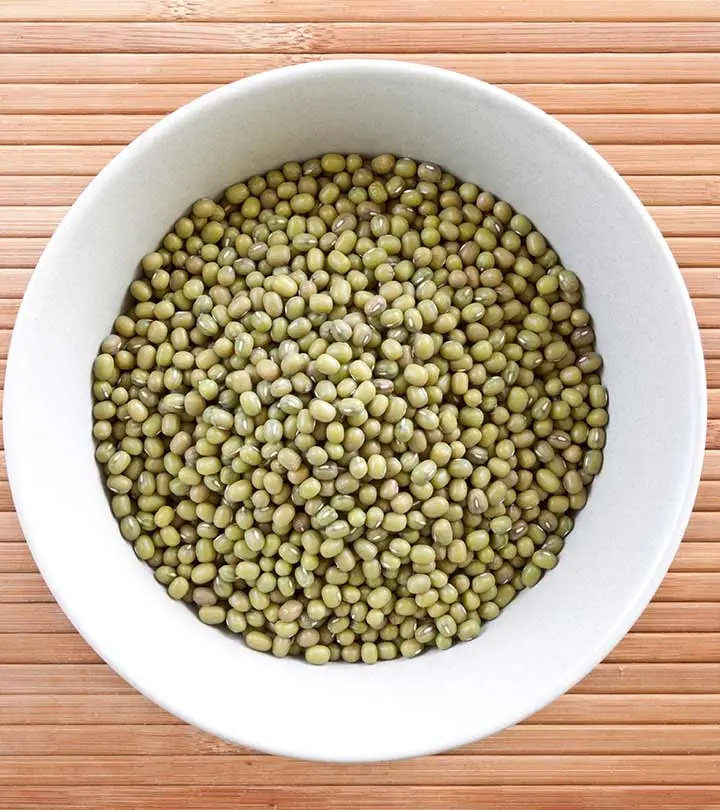
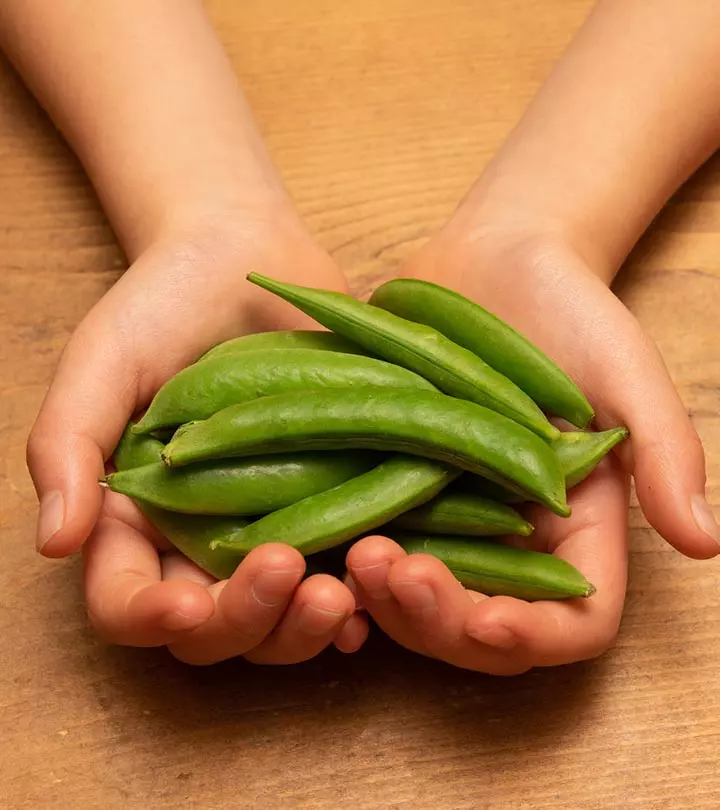
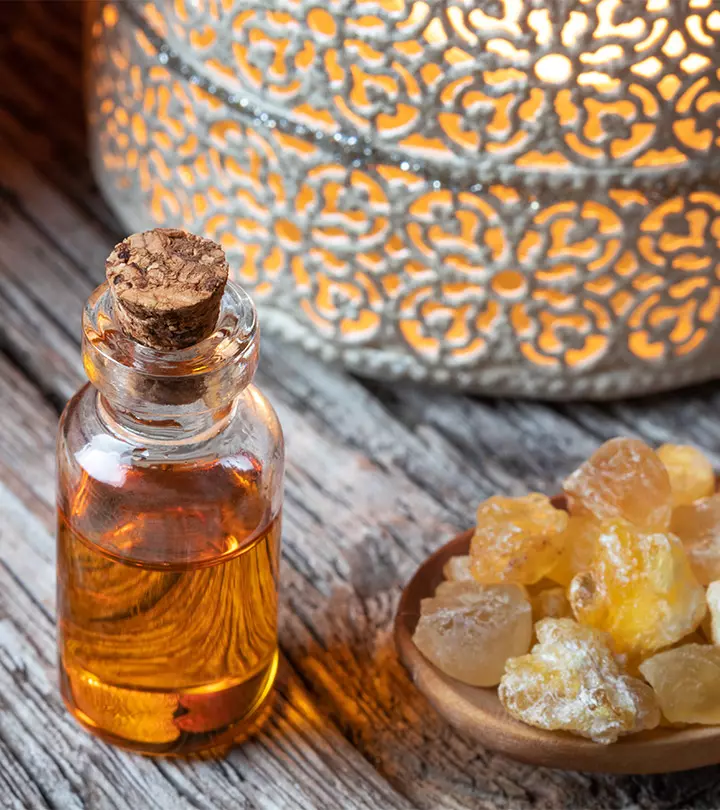
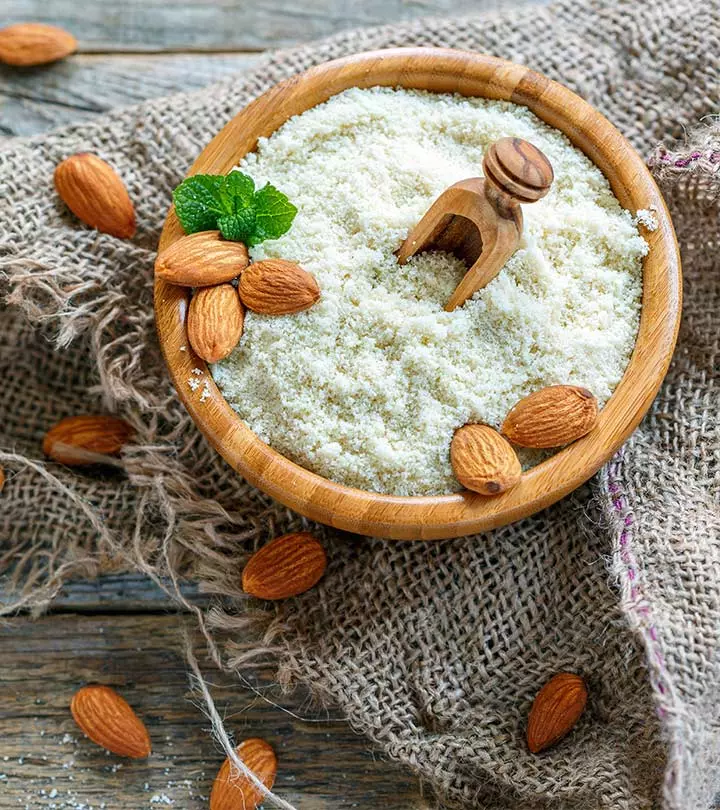

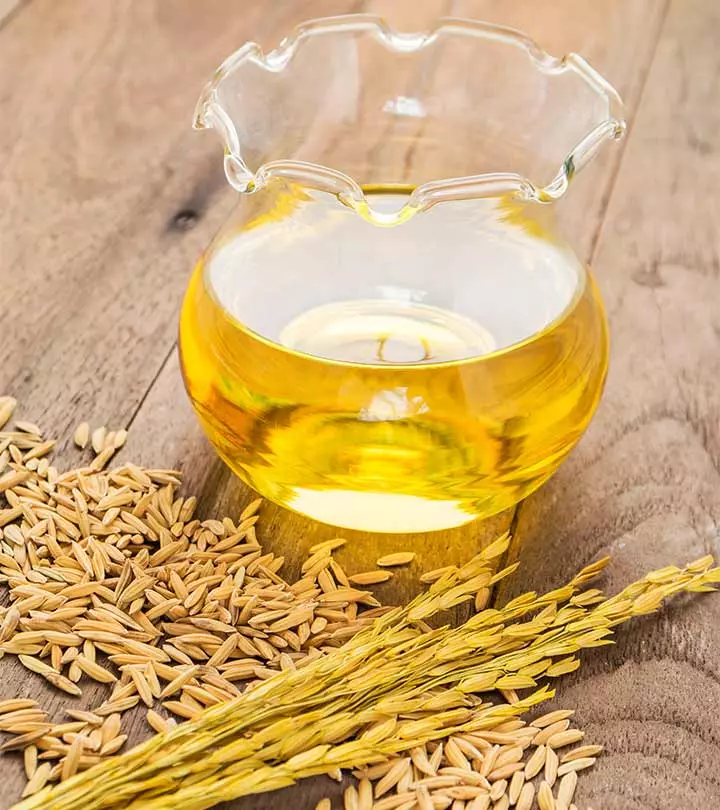

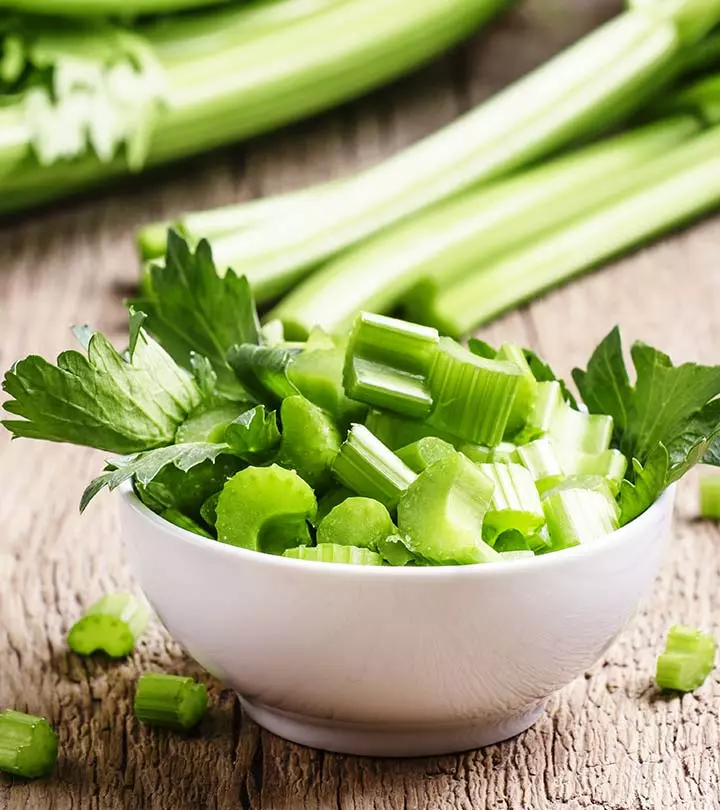
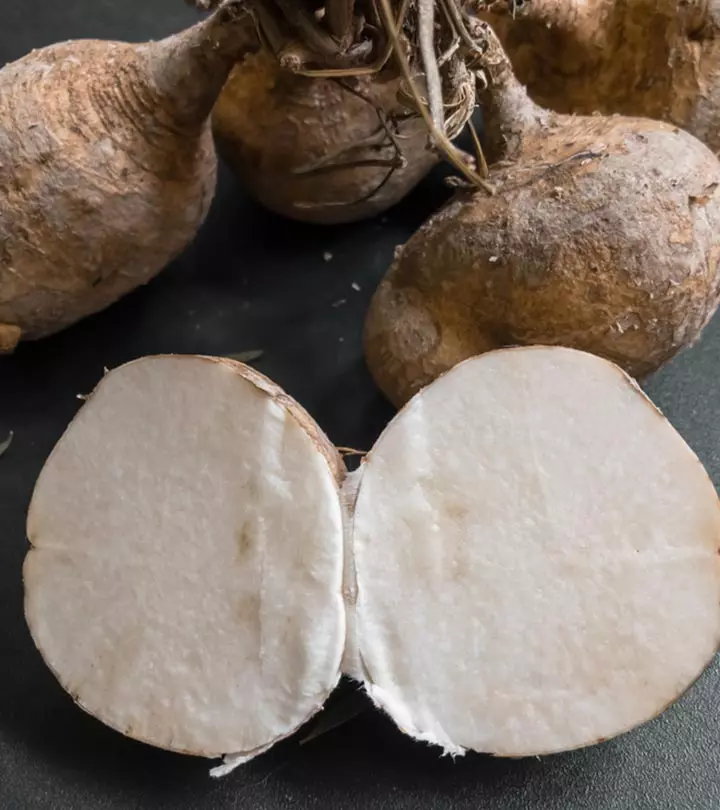

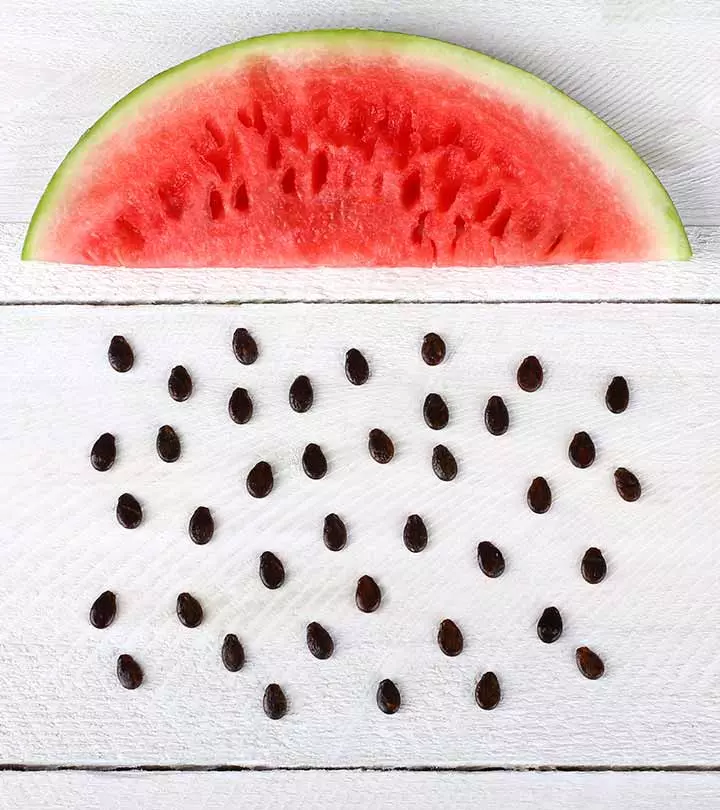

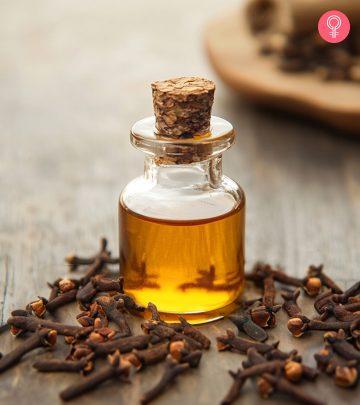
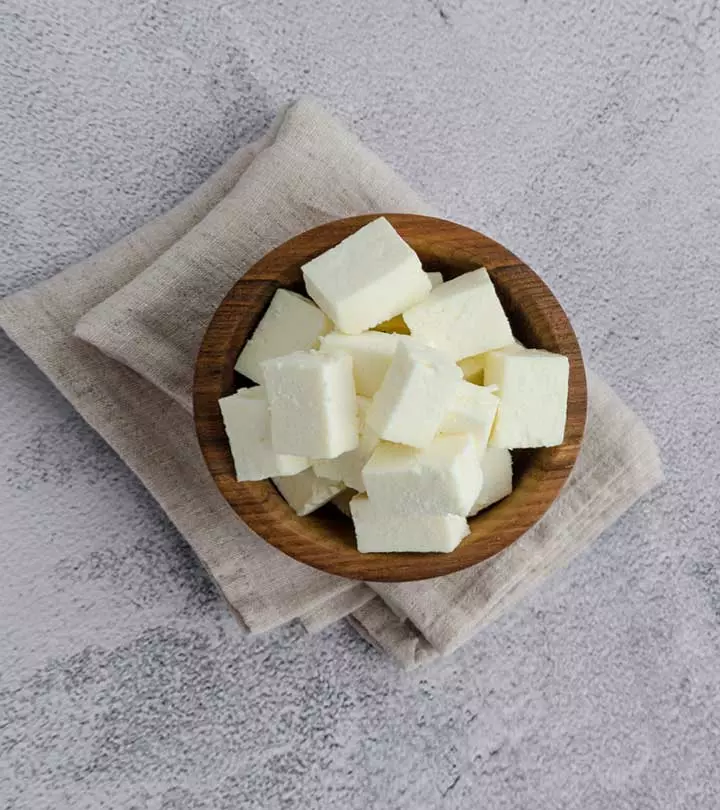
Community Experiences
Join the conversation and become a part of our empowering community! Share your stories, experiences, and insights to connect with other beauty, lifestyle, and health enthusiasts.